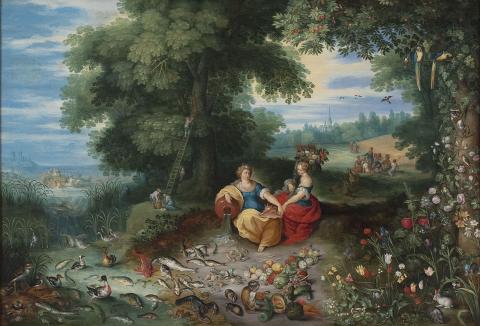Recommendation
In a letter dated 17 October 2008, the Minister for Education, Culture and Science (hereafter referred to as: ‘the Minister’) requested the Restitutions Committee (hereafter referred to as: ‘the Committee’) to issue a recommendation regarding the application of 30 May 2007 by the ‘Estate of Dr. Max Stern’ (hereafter referred to as: ‘the applicant’) for the restitution of the painting Allegory of Earth and Water by Jan Brueghel I. The claimed painting was returned to the Netherlands after the Second World War and is now part of the Netherlands Art Property Collection (NK collection) under inventory number NK 2303. The work is currently on loan to the Noordbrabants Museum in Den Bosch.
